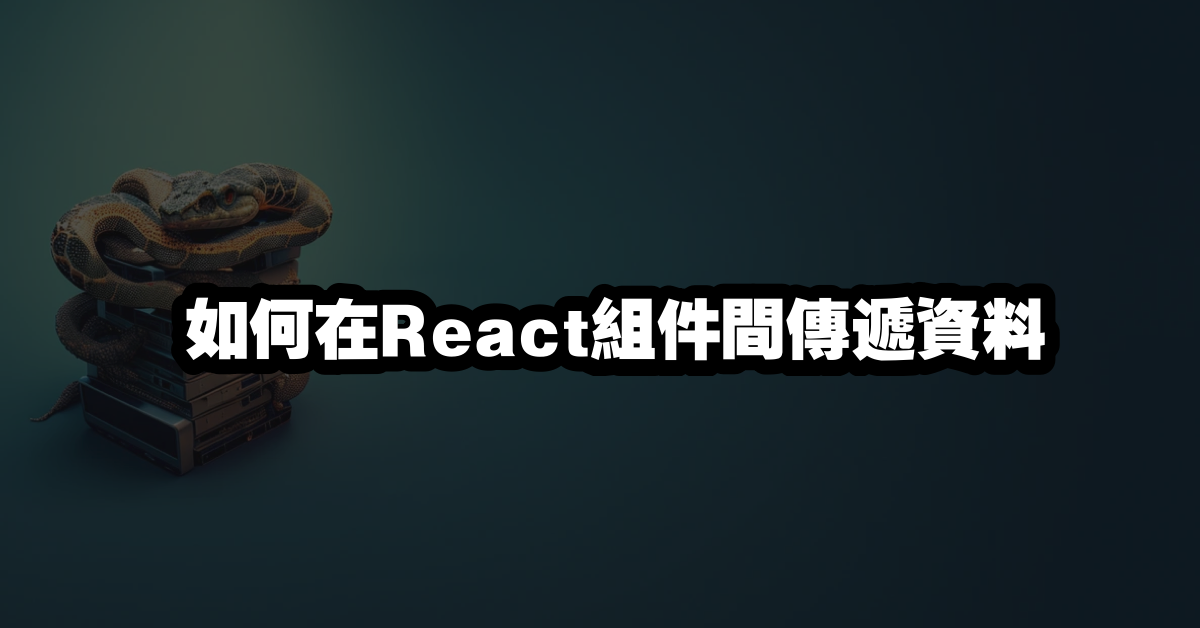
在 React 開發中,組件間傳遞資料是一個重要的技術,它能夠讓不同的組件共享和更新資料。在 2025 年的最新實踐中,我們主要有兩種方法可以實現組件間的資料傳遞:**props** 和 **context**。以下將詳細介紹這兩種方法的使用方式及最佳實踐。
目錄
使用 Props 傳遞資料
Props 是 React 中最常用的資料傳遞方式,可以讓父組件將資料傳遞給子組件。這裡有一個簡單的範例:
<ParentComponent>
<ChildComponent name={name} />
</ParentComponent>
在子組件 `ChildComponent` 中,你可以通過 `this.props.name` 來訪問父組件傳遞的變數。以下是完整的子組件範例:
class ChildComponent extends React.Component {
render() {
return <h1>Hello, {this.props.name}!</h1>;
}
}
最佳實踐
– 確保 props 的資料類型清晰,可以使用 PropTypes 來進行類型檢查。
– 使用解構賦值來簡化 props 的使用。
使用 Context 傳遞資料
Context 是另一種在 React 組件之間傳遞資料的方式,特別適合於多層級組件的資料傳遞。以下是如何使用 context 的範例:
首先,你需要建立一個 context:
const MyContext = React.createContext();
然後,在父組件中提供 context 的值:
<MyContext.Provider value={value}>
<ChildComponent />
</MyContext.Provider>
在子組件中,你可以使用 context:
class ChildComponent extends React.Component {
render() {
return (
<MyContext.Consumer>
{value => <h1>Value from context: {value}</h1>}
</MyContext.Consumer>
);
}
}
最佳實踐
– 使用 context 時,盡量避免過度依賴,保持組件的可重用性和可維護性。
– 可以結合 hooks(如 `useContext`)來簡化 context 的使用。
錯誤排除
在使用 props 和 context 時,常見的錯誤包括:
– 忘記在子組件中正確引用 props。
– 使用 context 時未正確包裹在 Provider 中,導致無法獲取值。
延伸應用
– 可以將 props 與 context 結合使用,進行更複雜的資料管理。
– 使用第三方狀態管理庫(如 Redux 或 MobX)來處理更大型的應用程式資料流。
結論
React 組件間的資料傳遞不僅是一個基礎技術,還是開發高效能應用的關鍵。無論是使用 props 還是 context,掌握這些技術都將大幅提升你的開發效率。
Q&A(常見問題解答)
1. 在 React 中,props 和 state 有什麼區別?
props 是由父組件傳遞給子組件的資料,而 state 是組件內部的可變資料。props 是不可變的,無法在子組件中直接修改。
2. 什麼時候應該使用 context 而不是 props?
當需要在多層級組件間傳遞資料時,使用 context 能夠減少 props 的層層傳遞,讓程式碼更簡潔。
3. 如何選擇使用 props 還是 context?
如果一個資料只需要在父子組件之間傳遞,則使用 props;如果需要在多個不相關的組件之間共享資料,則考慮使用 context。
—
